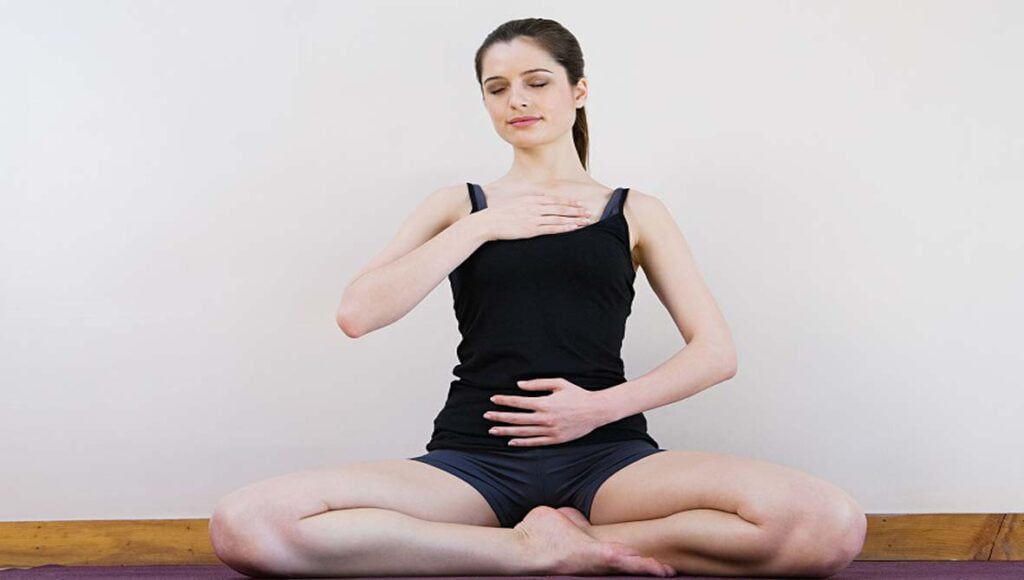In our modern life we often focus on a healthy diet to improve health and wellbeing but rarely do we care about our breathing patterns. Because of Dysfunctional breathing pattern people suffer from many health issues. Dysfunctional breathing pattern can cause you back pain, neck pain, increased anxiety, stress, sleeping issues, lack of focus and concentration. On the other hand, practicing a functional breathing pattern can help in many ways. This has many health benefits. Functional breathing can help people to improve focus, energy, immunity, sleep, mental health and mood.
What is Functional Breathing?
Functional breathing is a healthy breating technique that is referred to as light, soft, effortless and quiet breathing through the nose. This is a rhythmic breathing engaging diaphragmatic. In this breathing pattern you take a gentle pause while exhaling. If any of the above mentioned 4 pillars is missing then you can call it a dysfunctional breathing or poor breathing habit.
Why Functional Breathing is Important?
Functional breathing is a breathing technique that helps us in many ways. This helps to reduce snoring and sleep apnoea, fixes sinus congestion, reduces respiratory issues such as asthma. The functional breathing pattern can also help you to manage chronic pain, anxiety and insomnia.
When we learn to breathe functionally that means when we learn how to breathe lightly, slowly and deeply through the nose we start understanding its various usefulness. This includes:
- Increases the delivery of oxygen to the blood
- Reduced breathlessness
- The blood pressure gets decreased
- Improved mental health
- Reduced stress and calm mind
- Improvements in sleep and helps to manage insomnia
- Improvement in physical performance, energy and immunity
- Enhances ability to focus and concentrate
How to Optimize Breathing by Applying Functional Breathing Technique?
Functional breathing is a breath therapy that helps you to optimize your breathing habit to help you improve body and mental health. We are going to explain to you the techniques of functional breathing in different phases below.
Phase 1 – Nasal Breathing Engaging your Diaphragm

Diaphragmatic nasal breathing technique
This is the most important aspect of functional breathing. Nasal functional breathing can help you to keep your nose clearer. Nasal breathing helps us to filter out dust, virus, bacteria and other airborne particles from inhaled air and also improves at least 50% resistance to the flow of air and involves diaphragm into action. The more consistent you are in breathing through your nose the more you are likely to keep your sinus congestion and nose clearer.
In this phase engaging your diaphragm along with nasal breathing helps to increase the volume of air you inhale. Breathing engaging diaphragm is also called diaphragmatic or abdominal breathing which means you involve the belly area while breathing. The main motto in this phase is to breathe deeply, engage your diaphragm and fill your belly with air while inhaling. You must inhale low and slow and exhale the air slowly. A study shows practice of diaphragmatic breathing helps people with chronic obstructive pulmonary disease (COPD), cancer and heart problems.
How to Do this?
Step 1 – Stand up or sit up straight keeping your shoulder relaxed.
Step 2 – Close your mouth and your tongue should touch the roof of your mouth.
Step 3 – Place your one hand on your belly (navel and lower ribs area) and another hand on the chest.
Step 4 – Inhale air slowly through your nose allowing your diaphragm to stimulate. Your chest should not raise and let your belly raise and fill with air.
Step 5 – Now exhale the air slowly and effortlessly through your nose.
Step 6 – Focus on inhaling and exhaling air slowly, gently, smoothly and effortlessly. During the inhale of air, along with your belly your back and sides should also expand keeping the chest relaxed.
Step 7 – Keep doing this for 5 to 10 Minutes.
Phase 2 – Breath Mobility
In this phase we will focus more on the breathing mobility part. This means in this phase we will try to mobilize body parts such as thoracic spine and chest area and muscles that can put an impact on our breathing ability and quality. Tight and stiff muscles may impair deep breathing. Working on those areas may help you to breathe more functionally. This can be done in conjunction with phase one.
How to Do this?
Step 1 – Lie down straight on the bed.
Step 2 – Take a foam roller.
Step 3 – Set the foam roller on your back, across your spine.
Step 4 – Keep the roller at the base of your neck.
Step 5 – Put both of your hands at the back of your head to provide support to your head. Make sure you are not putting any strain on the neck instead you are just supporting your head keeping your neck and head relaxed.
Step 6 – Slowly push yourself upward along with the roller until you feel you are restricted and take a few deep breaths and then slowly come down to the normal position. Keep the roller in the rib section while rolling thought to mobilize the thoracic area.
While you are rolling through, take a deep breath. Do this for 7 to 10 minutes every day and you will realize the difference.
Breathe healthy which means breathe functionally. Functional breathing is a breathing pattern that we should follow every day. It is more than an exercise because this is what and how we should breathe every moment. There are many other functional breathing techniques too that can help you to optimize your breathing pattern but the main motive of this breathing technique is to breathe by engaging diaphragm so that you fully enjoy the advantage of breathing correctly.
For more information on health and wellness please visit our Blogposts.

